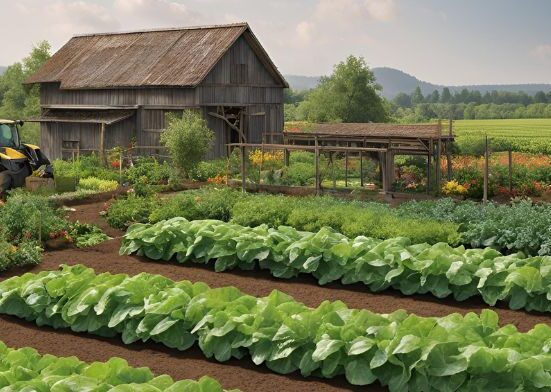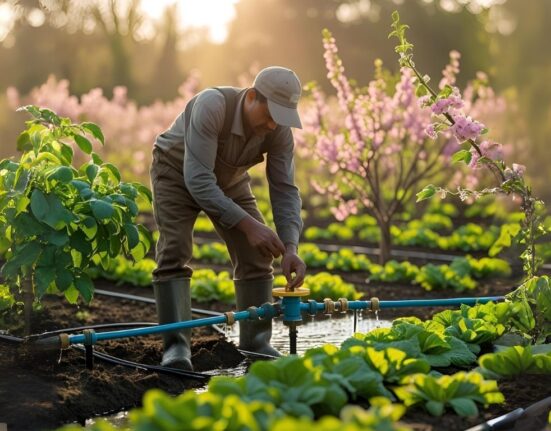Growing Green in City Spaces” explores the growing trend of cultivating fresh produce in the heart of bustling urban environments. As cities become more densely populated, the demand for sustainable and local food sources has spurred the rise of innovative urban farming practices. From rooftop gardens to vertical farms, city dwellers are embracing these green spaces to reconnect with nature, reduce food miles, and promote food security. Urban farming provides fresh and healthy produce and helps combat environmental issues like pollution and climate change. This movement is redefining how we think about food production and urban landscapes, proving that even in the most developed areas, it’s possible to grow green and thrive.
The Rise of Urban Farming
Urban farming is transforming city landscapes, providing fresh, locally grown food while promoting sustainability. As urban populations grow, limited space and food security concerns have led to innovative farming techniques such as rooftop gardens, hydroponics, and vertical farming. These methods maximize production in small spaces, reduce carbon footprints, and minimize reliance on long-distance food transportation. Community gardens and urban agriculture initiatives also foster social connections, empower local communities, and create economic opportunities. Cities worldwide are embracing policies to support urban farming, recognizing its role in environmental conservation and public health.
Additionally, technological advancements, such as automated irrigation and climate-controlled environments, are enhancing productivity. From abandoned lots to high-tech indoor farms, urban agriculture is redefining how food is grown and consumed in modern society. As more people prioritize sustainability and fresh, organic produce, urban farming continues to rise, shaping the future of food production in cities definition of urban farming worldwide.
Benefits of Urban Farming
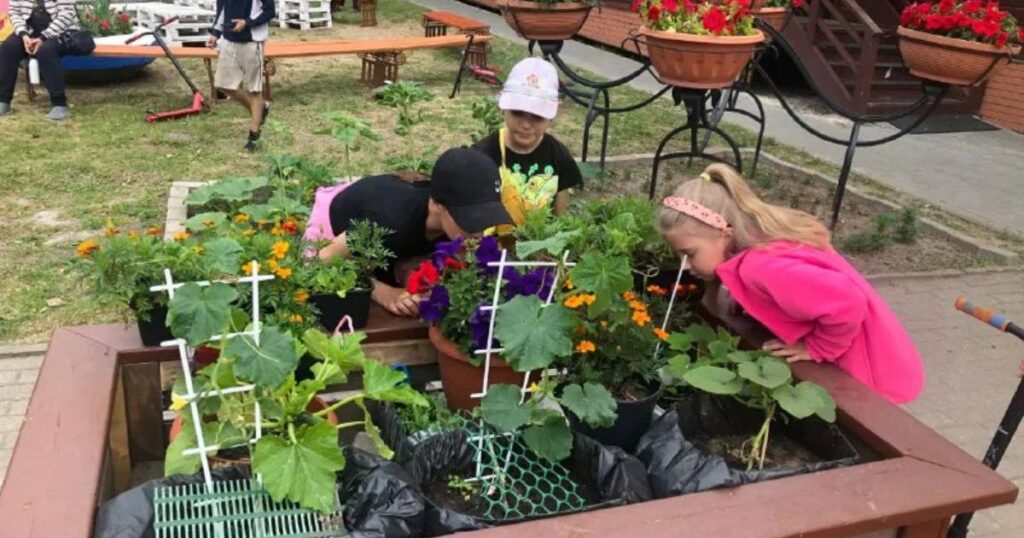
Urban farming is a sustainable solution that brings agriculture into cities, providing numerous social, economic, and environmental benefits. It enhances food security by offering fresh, locally grown produce, reducing reliance on long supply chains. By utilizing vacant lots, rooftops, and vertical spaces, urban farming maximizes land use efficiently. Economically, it creates jobs, supports local businesses, and reduces grocery costs for communities. environmentally, it helps combat climate change by reducing carbon footprints, improving air quality, and managing urban heat islands. Green spaces from urban farms also enhance biodiversity and promote ecological balance.
Additionally, urban farming fosters community engagement, education, and awareness about healthy eating and sustainable living. It provides opportunities for urban dwellers to connect with nature, promoting mental well-being and social cohesion. Overall, urban farming transforms cities into more resilient, self-sufficient, and environmentally friendly spaces, contributing to a healthier and more sustainable farm to table future.
Types of Urban Farming
Urban farming encompasses various methods of growing food in city environments. Key types include rooftop gardens, vertical farming, hydroponics, aquaponics, community gardens, and indoor farming. These methods use limited space efficiently, promote local food production, and contribute to sustainability, food security, and environmental health in urban areas.
Rooftop Farming
Rooftop farming is the practice of growing plants, vegetables, and even fruits on the rooftops of buildings, offering an innovative solution for urban agriculture. It helps combat food scarcity in densely populated areas while reducing the carbon footprint. This method utilizes unused space in cities, promoting sustainability by lowering energy consumption and improving air quality. Rooftop farms can be designed using containers, hydroponics, or soil-based systems, depending on the available space and resources. They also enhance biodiversity, offer green spaces for residents, and contribute to local food production, creating a more self-sufficient and resilient urban environment.
Vertical Farming
Vertical farming is an innovative agricultural method that involves growing crops in vertically stacked layers or on vertically inclined surfaces. It maximizes space, making it ideal for urban environments with limited land availability. This method utilizes advanced technologies such as hydroponics, aeroponics, and controlled-environment agriculture (CEA) systems to optimize plant growth. Vertical farming reduces the need for pesticides, uses less water than traditional farming, and can produce higher yields in a smaller area. By enabling year-round crop production, it promotes sustainable food production, reduces transportation costs, and contributes to addressing food security challenges in densely populated regions.
Community Gardens
Community gardens are shared spaces where individuals or groups cultivate plants, vegetables, and flowers. These gardens foster a sense of community, bringing people together to grow food, enhance the local environment, and promote sustainability. They provide access to fresh produce, encourage healthy eating, and help build social connections among neighbors. Often located in urban areas, community gardens transform vacant lots into vibrant green spaces that improve mental well-being and increase biodiversity. They also offer educational opportunities, teaching gardening skills and environmental stewardship while contributing to a stronger, more connected, and resilient community.
Hydroponics and Aquaponics
Hydroponics is a soil-free farming method that grows plants in nutrient-rich water solutions. Aquaponics combines hydroponics with fish farming, creating a self-sustaining ecosystem. These techniques use 90% less water than traditional farming and allow urban farmers to grow food indoors.
Backyard and Balcony Gardening
Even with limited space, city dwellers can grow food in their homes using small garden beds, hanging planters, and container gardening. With adequate care, herbs, leafy greens, and even small fruiting plants can thrive on balconies and Saltwater Farming windowsills.
Challenges of Urban Farming
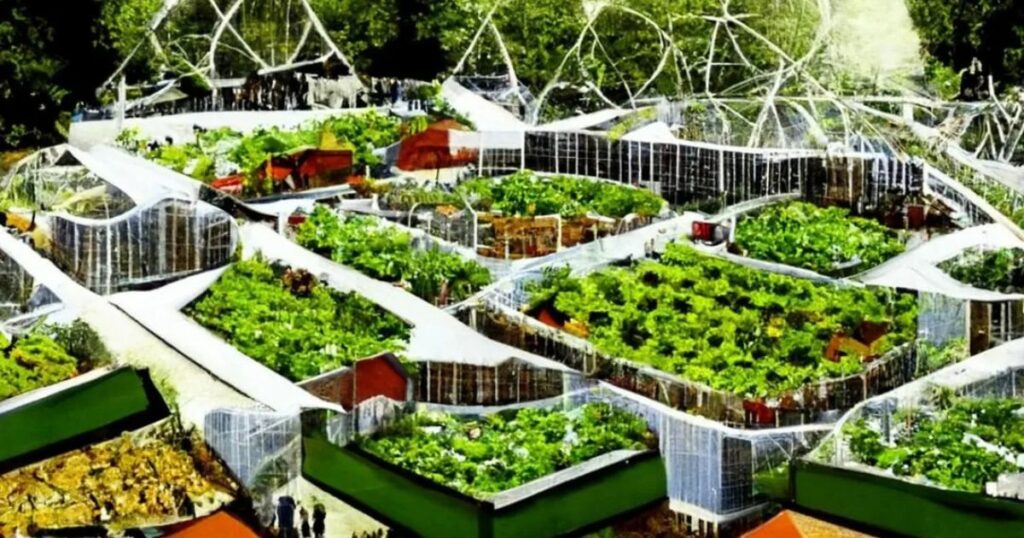
Urban farming presents several challenges that hinder its widespread adoption and sustainability. One significant issue is limited Space, as cities are often densely populated, leaving little room for large-scale farming operations. Urban areas also face soil contamination and poor soil quality, which can affect crop health and yield. Access to clean water can be scarce, and the cost of water infrastructure may be prohibitive for small-scale farmers. Additionally, urban farming faces regulatory hurdles, such as zoning laws and restrictions on land use, making it difficult for individuals or communities to establish agricultural projects.
The initial setup costs for farming infrastructure, such as greenhouses or vertical farming systems, can also be high. Finally, urban farmers may struggle with market access, as they must compete with large-scale commercial agriculture for consumers’ attention and business. Despite these challenges, urban farming holds potential for enhancing food security and sustainability in cities.
Limited Space
Limited Space refers to an environment or situation where available areas or resources are restricted. It often highlights the challenge of making the most of a confined setting, whether it’s a small room, a packed schedule, or minimal resources. This concept is relevant in various contexts, such as interior design, urban living, time management, or even creative projects. The term suggests the need for strategic planning, efficient use of Space, and innovative solutions to maximize functionality and comfort despite spatial constraints.
High Initial Costs
Setting up hydroponic or vertical farms requires significant investment in infrastructure and technology. Government grants and community funding can help offset these costs. Zoning laws and building regulations can restrict urban farming projects. Advocacy and policy changes are necessary to support urban agriculture.
Pollution and Soil Contamination
Urban environments may have soil contamination from industrial activities. Raised beds, container gardening, and hydroponics can provide safe alternatives. Cities experience microclimates that may impact plant growth. Controlled environments, such as greenhouses, can provide stable growing conditions year-round.
The Future of Urban Farming
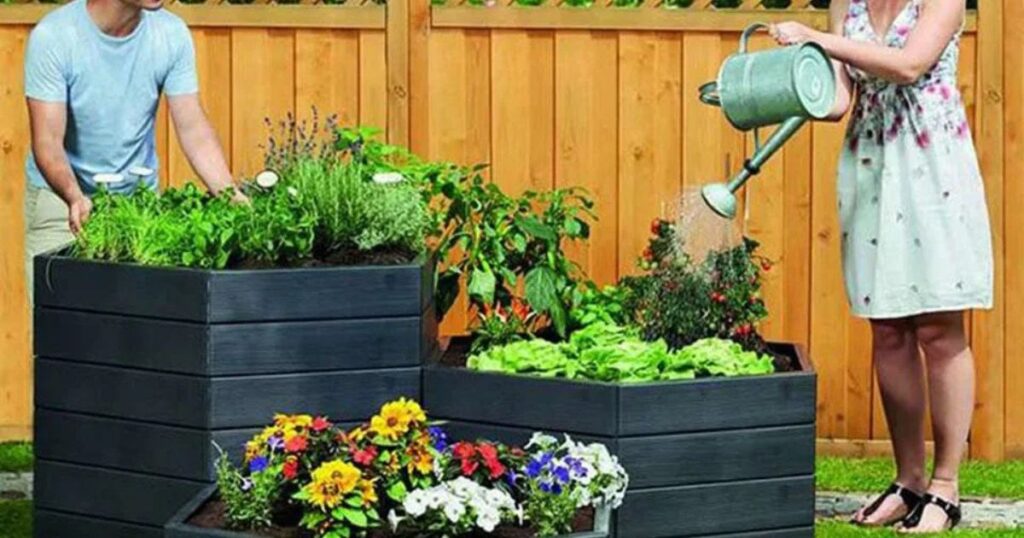 The future of urban farming is poised for significant transformation as cities look to become more self-sustainable and eco-friendly. Technological advancements such as vertical farming, hydroponics, and aquaponics are revolutionizing how food is produced in urban environments, allowing for the cultivation of crops in smaller, more efficient spaces. These systems reduce the need for vast expanses of land and can be integrated into existing infrastructure like rooftops, abandoned buildings, or vacant lots.
The future of urban farming is poised for significant transformation as cities look to become more self-sustainable and eco-friendly. Technological advancements such as vertical farming, hydroponics, and aquaponics are revolutionizing how food is produced in urban environments, allowing for the cultivation of crops in smaller, more efficient spaces. These systems reduce the need for vast expanses of land and can be integrated into existing infrastructure like rooftops, abandoned buildings, or vacant lots.
The focus on local food production will not only cut down on transportation costs and carbon emissions but also provide access to fresh, nutritious produce in urban food deserts. Additionally, the use of artificial intelligence and IoT (Internet of Things) devices for monitoring and optimizing growth conditions will improve yields while reducing waste. As more cities embrace these innovations, urban farming could become an essential part of the urban landscape, fostering healthier, more resilient communities.
How to Start an Urban Farm
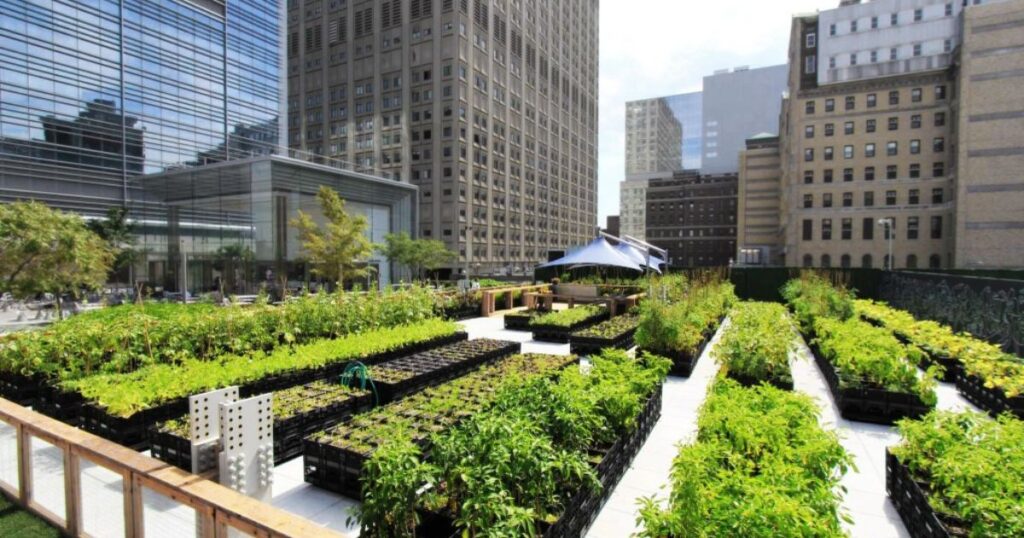 Starting an urban farm involves transforming available city space into a productive, sustainable agricultural site. Begin by selecting a suitable location, such as a rooftop, vacant lot, or backyard. Assess the Space for sunlight, access to water, and soil quality. If the soil is poor, consider raised beds or container gardening with high-quality soil. Choose crops that are well-suited for urban environments, such as herbs, leafy greens, tomatoes, and root vegetables. Invest in composting to enrich the soil and reduce waste. Utilize vertical gardening techniques, like trellises and hanging planters, to maximize urban farms Space.
Starting an urban farm involves transforming available city space into a productive, sustainable agricultural site. Begin by selecting a suitable location, such as a rooftop, vacant lot, or backyard. Assess the Space for sunlight, access to water, and soil quality. If the soil is poor, consider raised beds or container gardening with high-quality soil. Choose crops that are well-suited for urban environments, such as herbs, leafy greens, tomatoes, and root vegetables. Invest in composting to enrich the soil and reduce waste. Utilize vertical gardening techniques, like trellises and hanging planters, to maximize urban farms Space.
Secure any necessary permits or follow local zoning regulations for urban agriculture. Engage with the community to share knowledge, resources, and support. With proper planning, care, and persistence, an urban farm can provide fresh produce, contribute to local sustainability, and offer educational opportunities for city dwellers.
Assess Available Space
Assess Available Space” involves evaluating the physical area to determine its capacity for accommodating desired activities, items, or infrastructure. This process includes measuring dimensions, identifying limitations such as obstructions or structural features, and considering the potential for reorganization or modification. By thoroughly analyzing the Space, you can assess its suitability for a specific purpose, optimize the use of the area, and ensure compliance with regulations or safety standards. This assessment helps in making informed decisions, whether for home renovations, office layouts, or event urban agriculture planning.
Choose the Right Crops
Choosing the right crops is essential for a successful and sustainable farming experience. It involves considering factors such as climate, soil type, water availability, and market demand. Understanding the growing requirements of different crops, such as temperature ranges, growth periods, and nutrient needs, ensures healthy yields. Additionally, selecting crops that are resistant to pests and diseases and that can withstand local environmental conditions will reduce costs and labor. A well-planned crop selection can improve profitability, enhance soil health, and support long-term agricultural sustainability. Make informed what is urban farming decisions to optimize your farming outcomes.
Select a Farming Method
Select a Farming Method” involves choosing the most suitable agricultural practice based on available resources, land type, climate, and crop requirements. Farmers can opt for conventional farming, which uses synthetic fertilizers and pesticides, or organic farming, which avoids chemicals in favor of natural methods. Alternative methods like hydroponics, aquaponics, and permaculture offer innovative approaches to sustainable agriculture. Each method has its benefits, such as higher what is urban farmer yields,
Source Quality Materials
To ensure successful growth, get high-quality what is a urban farm soil, seeds, compost, and irrigation systems. Begin with a few plants and expand as you gain experience. Monitor growth patterns and adjust techniques as needed.Join local gardening groups, attend workshops, and collaborate with urban farming initiatives to share knowledge and resources.
Conclusion
Urban farming is more than just a trend—it’s a movement toward a greener, healthier future. By turning unused city spaces into productive farms, urban agriculture enhances food security, fosters community engagement, and promotes environmental sustainability. With the right approach, anyone can contribute to this green revolution and help transform cities into thriving, self-sufficient ecosystems. Whether you start with a rooftop garden, a community plot, or a small balcony setup, urban farming is an empowering way to cultivate fresh food and connect with nature in the heart of the city.
FAQ:
What is Urban Farming?
Urban farming refers to the practice of cultivating food, herbs, and plants within city environments. It can involve growing on rooftops, vacant lots, community gardens, or even in small indoor spaces. This movement aims to make cities more sustainable, healthy, and resilient by bringing farming closer to urban dwellers.
Why is Urban Farming Important?
Urban farming helps promote local food production, reduces food transportation costs, lowers carbon footprints, and strengthens community ties. It also contributes to greener cities by increasing green spaces, improving air quality, and promoting biodiversity. Furthermore, it provides fresh, healthy food to urban populations, often in areas that may have limited access to grocery stores.
Do I Need a Lot of Space to Start Urban Farming?
Not at all! Urban farming can be done in various spaces, ranging from large rooftops to small balconies, windowsills, and indoor spaces. Vertical gardening, container gardening, and hydroponic systems are great ways to maximize Space in smaller areas.
Can Urban Farming Help Combat Food Insecurity?
Yes, urban farming can play a crucial role in combating food insecurity by increasing access to fresh, healthy, and locally grown food, particularly in underserved areas. Many cities have urban farms that partner with local communities to provide food at affordable prices and create job opportunities.
Can I sell the food I Grow on my Urban Farm?
Selling the food you grow depends on your local regulations. Some cities have programs to support urban farmers who sell their produce, while others may require permits. Be sure to check with local authorities about zoning laws, permits, and any requirements for selling your crops.



